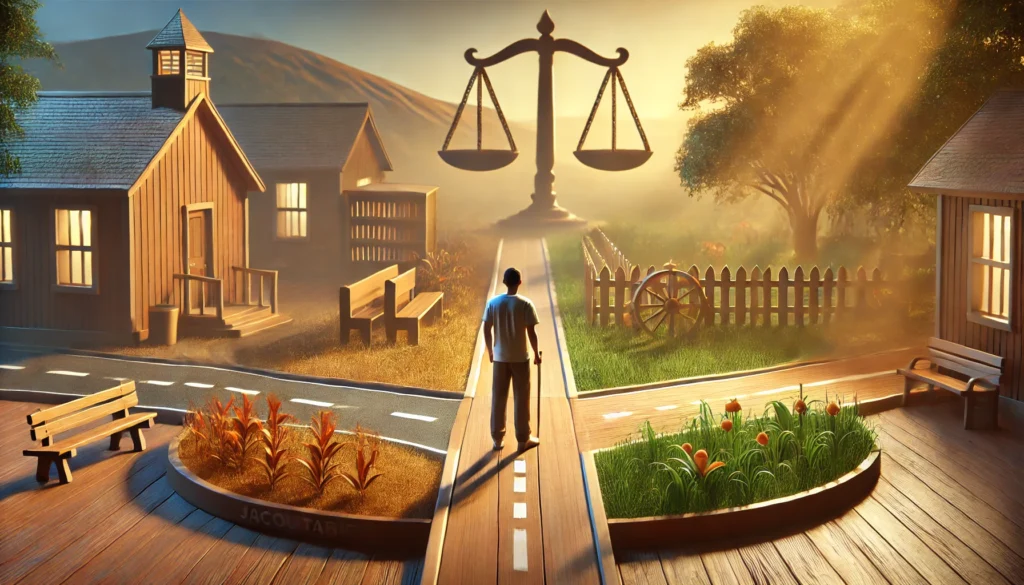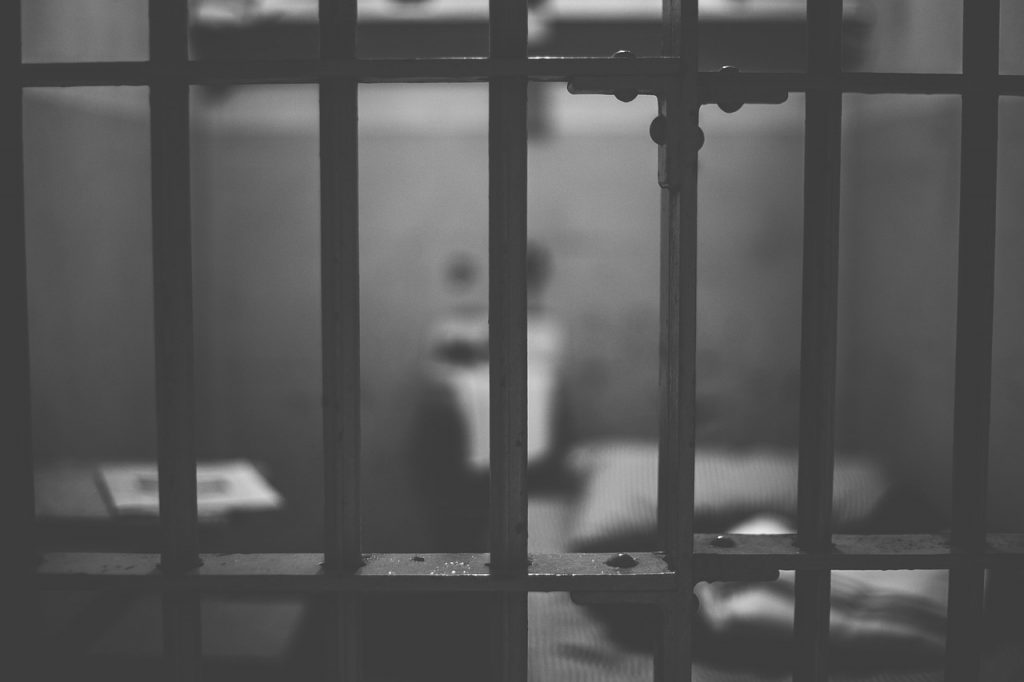Published on: 9th August 2024
Authored by: Upasna Upadhyay
Dr. Rizvi College of Law
ABSTRACT
The juvenile justice system’s complex dynamics of sentencing, highlighting how legal systems balance the inherent vulnerabilities of youth with the seriousness of their offenses, as rehabilitation efforts often clash with accountability for severe crimes. The article advocates for a sentencing approach that acknowledges juveniles’ unique status and addresses justice demands, advocating for reforms that align the system with its original rehabilitative ethos.
The juvenile justice system faces a significant challenge in balancing rehabilitation potential with accountability, as courts must address the severity of young offenders’ crimes. Juvenile justice often faces conflicts between compassion and accountability, especially when dealing with serious offenses committed by young offenders. Legislators and politicians are proposing innovative legislative actions to reform the juvenile justice system.
The two courts have sharply contrasting ideas about adolescents who break the law their immaturity and culpability, whether they can be treated or rehabilitated, the security threats they pose, and the punishment they might deserve. Whatever the motivation, sending an adolescent offender to the criminal court is a serious and consequential step. It is an irreversible decision that exposes young lawbreakers to harsh and sometimes toxic forms of punishment that, as the empirical evidence shows, have the perverse effect of increasing criminal activity.[1]
KEYWORDS
Juvenile Justice, retribution, rehabilitation, Juvenile crime, offence, criminal court.
INTRODUCTION
India presents a unique case in terms of the sheer size of its population and 46% of them are children; characterized by heterogeneity in respect of physical, economical, social, and cultural conditions. Its population of 1.12 billion constitutes 16% of the world population, with 74% of them living in rural areas.[2]
Juvenile Justice is a system of laws, policies, and procedures designed to regulate the treatment and treatment of non-adult offenders for law violations, and provide legal remedies to protect their interests. The juvenile courts represent the nation’s belief that juvenile offenders should be treated differently, focusing on accountability and punishment. Initially, the juvenile justice system aimed to rehabilitate offenders, believing that proper treatment could turn them into productive members of society.
But, in recent years the juvenile justice system has faced criticism for its leniency in sentencing violent juvenile offenders, leading to increased juvenile crime and public demand for tougher punishments. The system’s original goals failed, forcing a retributive shift, shifting its focus from protecting juvenile offenders to protecting society from those incapable of rehabilitation.
SOLE FOCUS ON REHABILITATION: ISSUE ARISES
The juvenile justice system’s focus on rehabilitation can lead to critical issues, especially when dealing with serious offenses. The primary goal is to help young offenders reform and reintegrate into society, but this approach can also present challenges.
- WEAKENED ACCOUTABILITY: The justice system may struggle to hold juveniles accountable for their actions when rehabilitation is the sole focus, particularly in severe crimes, leading to a perception that young offenders are not fully responsible, potentially diminishing the severity of certain offenses. Rehabilitation programs often address underlying issues contributing to juvenile criminal behavior, such as trauma, lack of education, or social disadvantage. However, this may overlook the importance of personal accountability. If the justice system overemphasizes external factors without promoting responsibility, it may lead to a mindset where the offender views themselves as a victim rather than an agent of change.
- PUBLIC PERCEPTION: A justice system that prioritizes rehabilitation without balancing it with accountability can damage public trust, as victims and the public may perceive it as too lenient, especially for severe offenses, resulting in a lack of justice. The public expects justice systems to balance rehabilitation goals with accountability, especially in serious crimes. If perceived as overly lenient, focusing solely on rehabilitating offenders without addressing harm, public trust can erode.
During the Nirbhaya case, one of the offender was a juvenile and was provided leniency. Nirbhaya’s family demanded that the juvenile’s identity be made public a month before he was to be released. Unfortunately, the juvenile’s identity was never released, and despite the widespread outcry, he was released after three years. In the Nirbhaya case, hailed as the most heinous rape in the history of India, this is how the Judiciary acted. Due to the massive outcry in 2015, laws were changed imposing penalties on children in conflict with the law. Later, the Lok Sabha passed the Juvenile Justice (Care and Protection of Children) Act, which states that children aged 16-18 could be treated and charged for heinous crimes as adults.[3]
- RIGHTS OF VICTIM BEING NEGLECTED: The justice system must strike a balance between rehabilitation and addressing the harm caused by the crime, ensuring that victims’ needs and rights are not overshadowed by rehabilitation efforts. The focus on the future potential of juvenile offenders can overlook the immediate harm caused to victims, leading to feelings of marginalization and incomplete recognition, justice, and closure within the justice process.
- QUESTIONS ON THE EFICACY OF REHABILITATION: Rehabilitative efforts may not always be successful for juveniles with deep-seated behavioral issues or violent crimes, and over-reliance on rehabilitation without proper assessment of re-offending risk can lead to ineffective outcomes and potential societal harm. Rehabilitative efforts for juveniles vary based on factors like crime nature, offender background, and psychological profile. For violent or repeat offenses, intensive, specialized interventions may be necessary, but the success of these programs is not guaranteed.
- ASSORTED IMPLICATION: Juveniles may view the justice system as lenient if they perceive it as primarily focused on rehabilitation rather than punishment, leading to a diminished sense of responsibility and less severe consequences for their actions. The justice system’s deterrent effect depends on the certainty and severity of punishments, and if juveniles perceive the system prioritizing rehabilitation over punishment, the perceived risk of punishment may decrease.
ANNEXING RETRIBUTION
First, it is important to point out that in the legal context, determination of mens rea is based on a retrospective, social judgment about what a person was (or was not) thinking at the time he or she committed an illegal act—in essence, retrospective mind reading. [4]
The integration of retribution and rehabilitation in the juvenile justice system aims to ensure accountability and appropriate punishment for young offenders and considering the intention will definitely help. Annexing retribution can be held-
- BALANCE BETWEEN RETRIBUTION AND REHABILITATION: Retribution in juvenile justice involves imposing punishments proportional to the severity of offenders’ crimes, aiming to maintain the integrity of the justice system by ensuring serious offenses are punished while also providing opportunities for reform, while ensuring offenders understand the gravity of their actions. Juvenile offenders who are held accountable for their actions can act as a deterrent against future crimes, as they understand the consequences of their actions, which can lead to a safer community and a more responsible individual.
- ACCOUNTABILITY: Fostering a sense of accountability by making it clear that actions have consequences, has to be of prime importance. Juvenile offenders who are held accountable through proportionate punishment are more likely to recognize the seriousness of their actions, which is crucial for personal development and deterring future criminal behavior, as society will not tolerate harmful conduct. The justice system instills a sense of responsibility in young offenders by establishing clear, consistent penalties that reflect the severity of the offense, thereby reinforcing the idea that criminal behavior is not tolerated
- SCRUTINIZE VICTIM AND PUBLIC CONCERN: The public expects justice systems to hold offenders accountable, regardless of age. Addressing public concerns involves ensuring juvenile offenders face appropriate consequences, balancing rehabilitation with accountability, and demonstrating serious offenses to maintain public confidence. The system of sentencing, which incorporates elements of retribution or accountability, serves the public by ensuring justice, especially in severe crimes, and reinforcing the notion that it is not just about reforming offenders but also upholding the rule of law. The justice process should involve victims, allow them to express their experiences, and ensure they receive compensation or restitution, as recognizing and addressing the harm caused to them is crucial for achieving comprehensive justice.
- DETERRING RECIDIVISM: Rehabilitation programs effectively tackle the root causes of juvenile delinquency, including substance abuse, mental health issues, and lack of education. Rehabilitation programs for juveniles require ongoing aftercare and support to prevent recidivism. Regular check-ins, mentoring, and support services help them stay on track and avoid returning to criminal behavior. Building strong, positive relationships with family, mentors, and peers can help juveniles develop a support network that reinforces good behavior, provides emotional support, and discourages re-offending.
- MORAL AND ETHICAL EDUCAFTION: The education of juveniles on the impact of their actions on others, including victims and the community, aims to foster empathy and accountability. Promoting self-awareness in juveniles encourages them to critically examine their actions, motivations, and underlying reasons, thereby enabling them to understand and modify their behavior patterns. The use of restorative justice strategies involves offenders engaging in discussions with victims and community members, emphasizing the importance of making amends and understanding the broader impact of their actions.
CONCLUSION
Juvenile sentencing faces a complex challenge of balancing age and crime severity, requiring careful consideration of young offenders’ developmental maturity and the gravity of their crimes.
Age influences rehabilitation potential and punitive measures, but severe crimes require a response that acknowledges their impact on victims and society. A nuanced approach considers both factors to ensure justice promotes rehabilitation, holds offenders accountable, and supports individual growth and community safety.
Adolescents’ cognitive and emotional development significantly influences their behavior and rehabilitation potential, making age a crucial factor in sentencing decisions. However, the seriousness of offenses requires a balance between justice and public safety. Effective juvenile justice requires a system considering the offender’s developmental stage and responding appropriately to the crime’s severity, ensuring justice and reform.
REFERENCES:
[1] Jeffrey Fagan ‘JUVENILE CRIME AND CRIMINAL JUSTICE: RESOLVING BORDER DISPUTES’ (The Future of Children, 2008) <https://www.jstor.org/stable/20179980>
[2] Shastri Priyavadan Chandrakant ‘CHILD IN INDIA’ (Indian Journal of Psychiatry, 2008) <https://www.ncbi.nlm.nih.gov/pmc/articles/PMC2738347/#:~:text=India%20is%20a%20home%20to,54%25%20of%20the%20population).>
[3] Timisha Chauhan ‘JUVENILE JUSTICE IN INDIA AFTER NIRBHAYA RAPE CASE’ (Ile Legal Blog, 29 Apr 2022) <https://blog.iledu.in/juvenile-justice-in-india-after-nirbhaya-rape-case/#:~:text=Nirbhaya%20Case&text=During%20the%20commission%20of%20the,Others%20were%20sentenced%20to%20death.>
[4] Mark R. Fondacaro ‘The Injustice of Retribution: Toward a Multisystemic Risk Management Model of Juvenile
Justice’ (Journal of Law and Policy, 2011) <https://brooklynworks.brooklaw.edu/cgi/viewcontent.cgi?article=1090&context=jlp>




